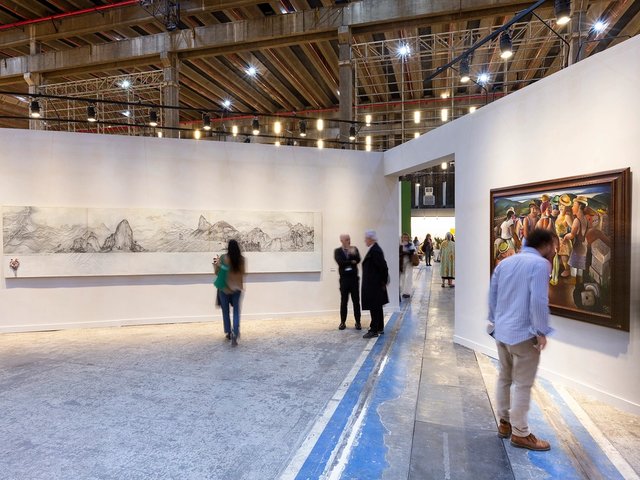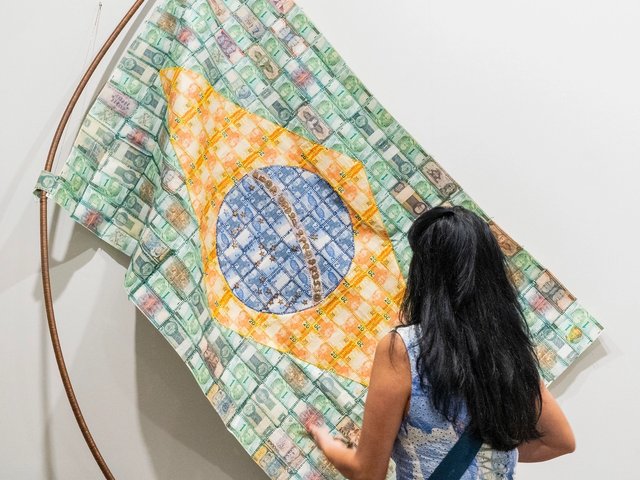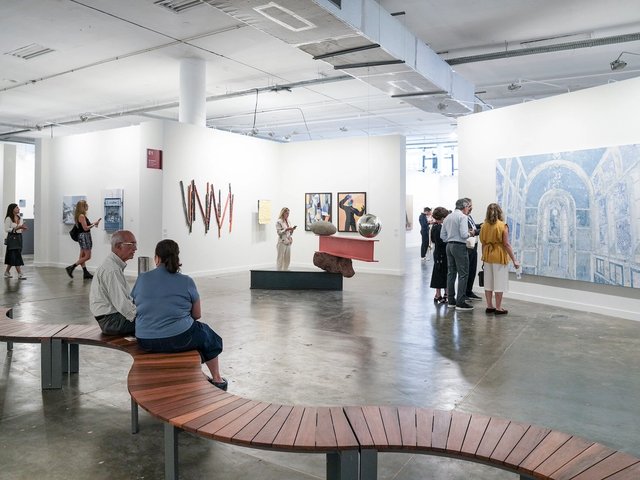There was a palpable sense of optimism on the first day of the 18th edition of SP-Arte, one of Latin America’s biggest art fairs, which is back in its traditional venue and calendar slot for the first time since 2019. Laughter and affectionate hugs were continuously observed throughout the halls and stands. The fair, which continues until 10 April, features 100 art galleries and 30 design galleries this year, as well as a new sector showcasing artists who do not have galleries (yet), in the Bienal Pavilion in the heart of São Paulo.
“The pandemic showed the art market that the internet is a very important tool, but the live experience is of course better,” says Fernanda Feitosa, SP-Arte’s founder. After postponing its 2020 edition, the fair held two events in 2021: an entirely virtual iteration and a slimmed-down hybrid event. She adds, “Art is to be lived in person.”
Gallerists and collectors The Art Newspaper spoke to at the fair concurred with Feitosa’s sentiment, remarking on how good it is to be back to a face-to-face event. The buoyant mood matches the findings of art economist Clare McAndrew’s newest Art Basel and UBS Global Art Market Report, which found that 75% of high net worth collectors in Brazil planned to buy art in 2022 (the highest rate of any country where collectors were surveyed) and nearly one third of dealers expected to make substantially more sales this year than in 2021.
Brazilian market back on track
“The experience of the contact with a piece of artwork cannot be substituted by an image on a screen,” says architect and collector Paulo Barbosa. “I have been to every edition of the SP-Arte so far and today I have the feeling we have come alive again.”
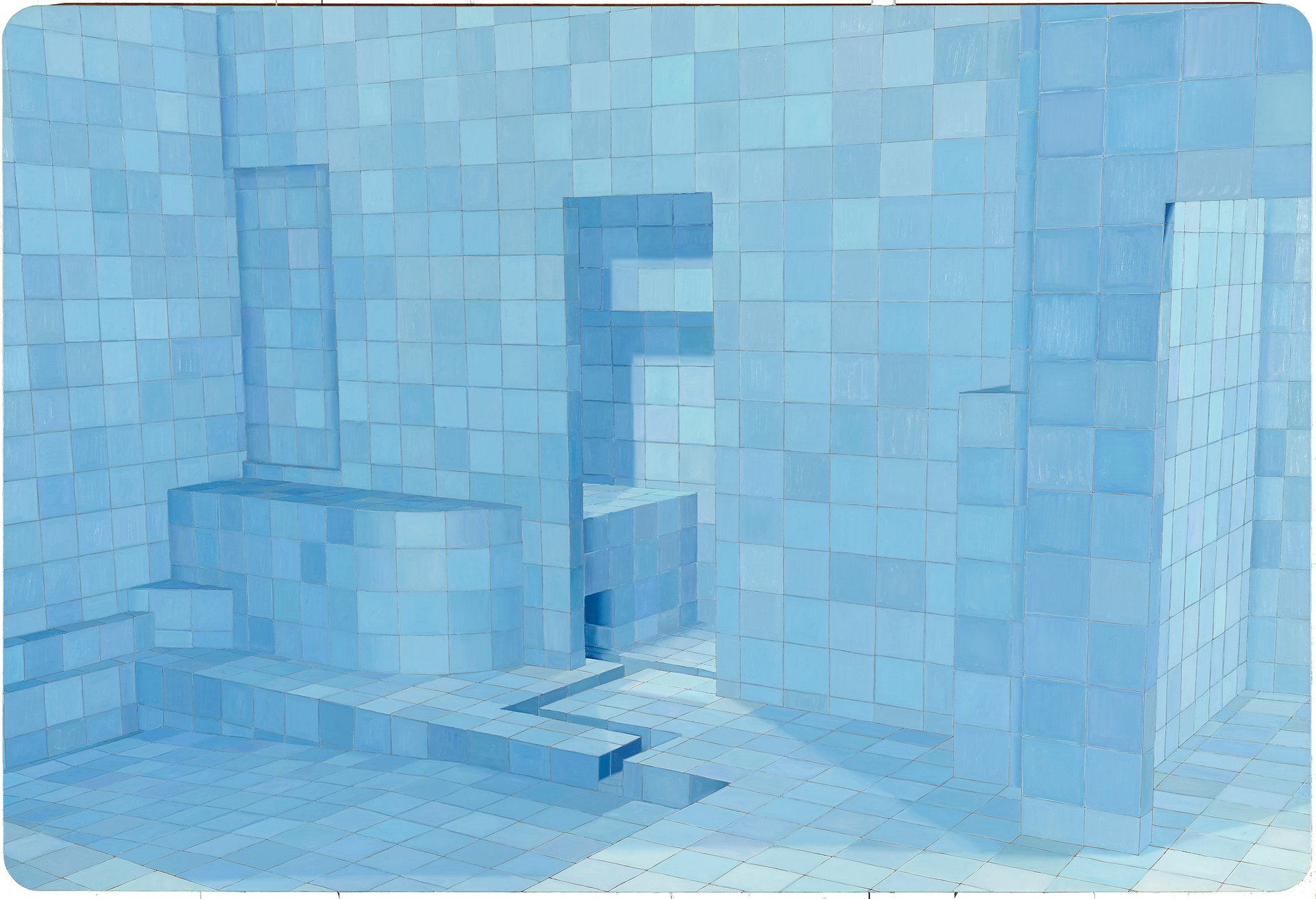
Adriana Varejão, Blue Sauna, on view at SP-Arte 2022 Courtesy SP-Arte, photo by Diego Mercado
Martin Castillo, director of Galeria Sur from Punta del Este, Uruguay, agrees. “People are excited. There will be more movement than other years. We are starting to recover the path we were on before the pandemic,” he says.
For Castillo, the Brazilian market is strong and with the US dollar falling in the last few weeks against the Brazilian real, purchasing power for Brazilian collectors has increased, which is good news for the fair since almost 80% of the buyers are from Brazil, he says.
Marcelle Farias, a partner at Marco Zero gallery, located in the northeastern city of Recife, Pernambuco, is a newcomer at the fair. “SP-Arte is the most important stage for us to present our collection. The biggest platform in Latin America. We wanted our first participation in a fair to be at SP Arte,” she says. “Many people are interested in our artists from Pernambuco. I haven't stopped for a minute.” By the fair's second day, the gallery had sold five works by Francisco Brennand (two paintings and three sculptures) and two paintings by the late Brazilian artist Gilvan Samico.
Others who have been participating in the fair longer, are enthusiastic about the prospect of being back to something resembling normal.
“We are already very satisfied with the fair. The most important collectors have already been here to look,” says Max Pelingeiro from Pinakotheke, which has locations in Rio de Janeiro, São Paulo and Fortaleza. “Last year during the week of the fair, there were rumors that the minister of economy of Brazil was leaving his post, so this made the [art] market more apprehensive. This year is calmer, and we have much higher expectations. Even before the opening, we sold a work by Brazilian artist Alfredo Volpe.”
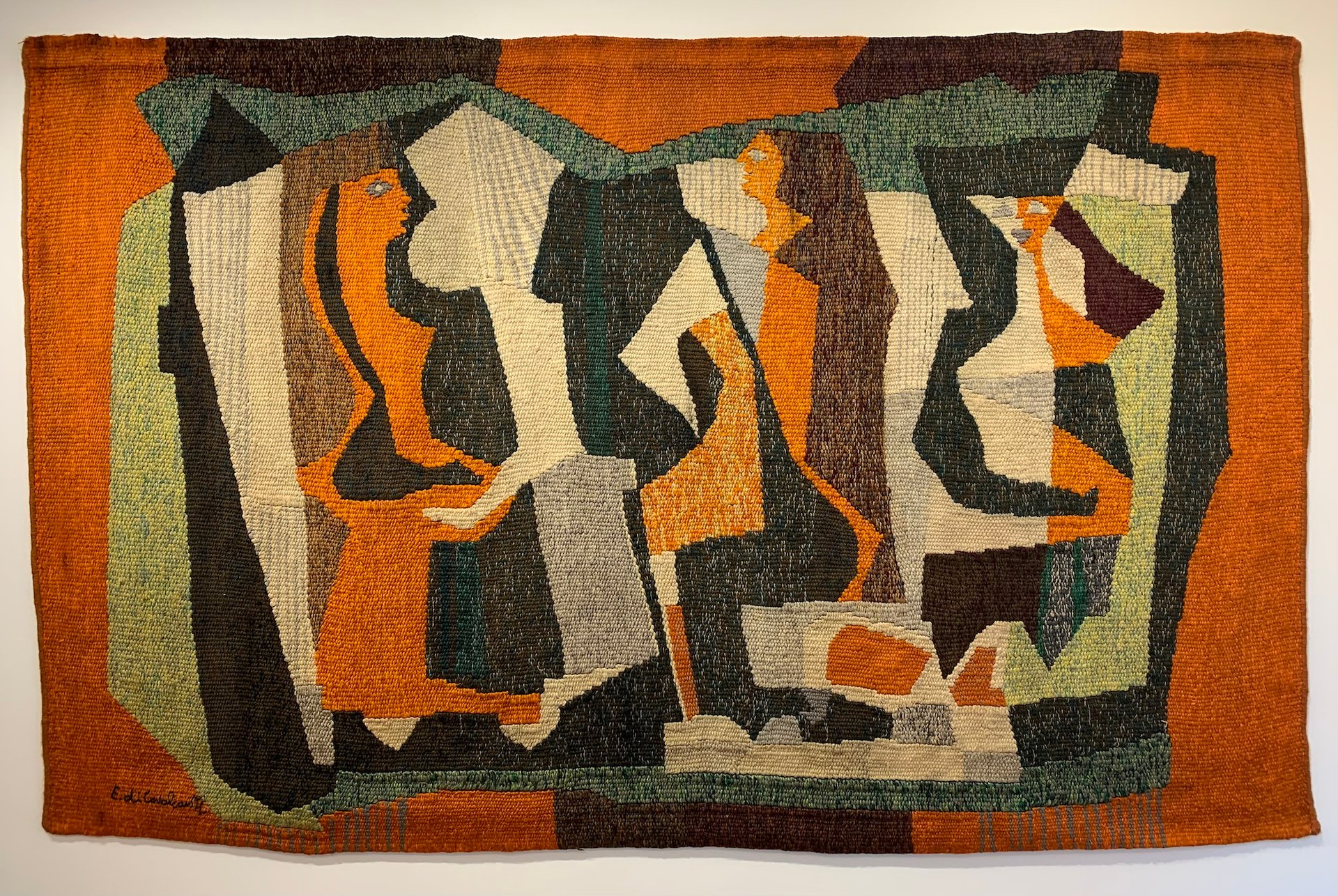
Di Cavalcanti, Tres Mulheres (1960-70), on the Arte 57 stand at SP-Arte Photo by Guilherme Gouvêa, courtesy Arte 57
“The fair has just started but we can see that it is very busy. Many people wanted to come back, meet each other again,” says Piero Atchugarry, whose namesake gallery has locations in Miami and Garzon, Uruguay, and sold works by Adam Jeppesen, Pablo Atchugarry and Túlio Pinto on the fair’s first day.
Representatives for Opera Gallery, which is in its third year participating in SP-Arte, are also excited and optimistic. “We have 14 spaces around the world, but none in South America so we come to SP-Arte, to show our artists to new collectors we cannot reach during the rest of the year,” says Damien Simonelli, director of Opera Gallery. “It is the first day, but we feel a good vibe, a good energy. People are very enthusiastic about the fair, about coming back to see beautiful art. We feel that now the bad times are behind us.”
New artists on the radar
One of the highlights of the fair is a new sector, dubbed Radar. With five collectives and nine individual artists, Radar aims to promote and give visibility to artists with no commercial representation.
“This sector is very important because we are trying to introduce these artists to a larger community that can, in the future, come to represent them,” says Feitosa.
“The creation of the sector comes from the urgency of a collaborative circuit. A circuit in which some discussions have been left outside, some key figures have been left outside. We need to bring these discussions and artists inside,” says journalist and art critic Felipe Molitor, who curated the Radar sector.
According to Molitor, many of the artists featured in the sector have day jobs as gallery workers or assistants to established artists.

Visitors to the 2022 edition of the SP-Arte fair in São Paulo Photo courtesy SP-Arte
“Although outside the fair circuit they participate in exhibitions and have dialogues with curators and galleries, these connections are not in a continuous, consistent manner,” he says. “We hope that gallery owners and the market will pay attention to these new names and eventually become interested.”
Molitor says there have already been signs of curiosity about the unrepresented artists being showcased, with certain gallerists making the first invitations. For him this is emblematic of the fair’s mood more broadly, with attendees and participants eager to reconnect after two difficult years.
“We did an edition last year that felt more like a preview, due to the reduced number of galleries and public,” he says. “The entire circuit has huge expectations, not only economic, but also to meet again, to re-establish contacts. The pandemic has allowed other types of online contact, but art needs face-to-face interactions.” He adds, “The feeling is amazing this year.”
- SP-Arte 2022, Bienal Pavilion, São Paulo



